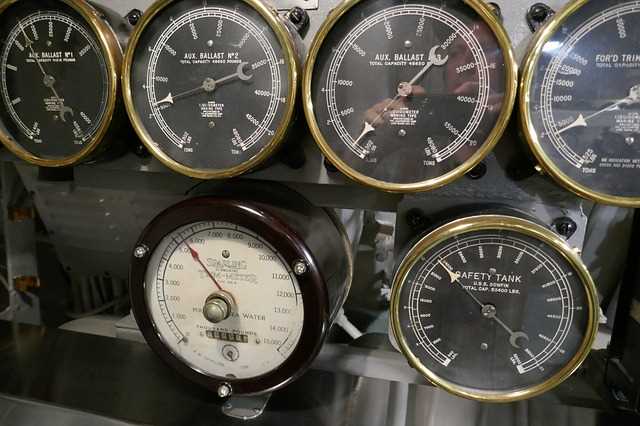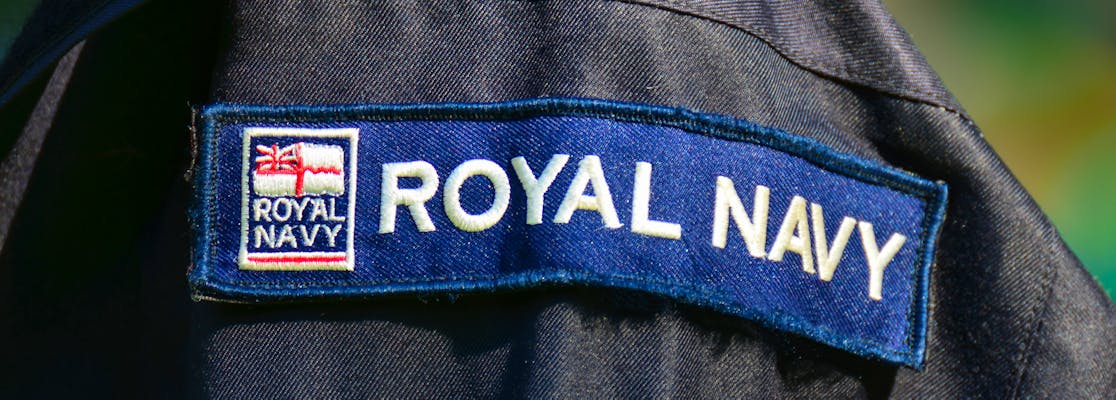The Royal Navy Recruitment Test (2024 Guide)
All products and services featured are independently selected by WikiJob. When you register or purchase through links on this page, we may earn a commission.
The Royal Navy offers its employees a meaningful and exciting career as a member of its diplomatic force. It provides an important service, preventing conflict, protecting the British economy and assisting nations in need of humanitarian aid.
Before becoming part of the fleet, however, all applicants must undergo a rigorous testing procedure.
If you’re applying to be an officer in the Royal Navy, this begins with the Naval Service Recruiting Test (NSRT).

What Is the Naval Service Recruiting Test?
The Navy uses the NSRT as part of the comprehensive selection and testing process that would-be officers undergo.
This test is a broad psychometric test. Ostensibly, it’s a test of your overall academic intelligence, but it also implicitly tests several other critical skills the Navy is looking for.
Officers are required to provide leadership, mentor younger team members, make challenging (and rapid) strategic decisions, and will often be responsible for their entire crew during international missions.
Therefore, the NSRT is a crucial part of assessing whether you are made of ‘officer material’. The test contains wide-ranging questions and requires you to apply theoretical or abstract knowledge to practical situations in a time-sensitive, high-pressure situation.
There are 19 different officer roles to choose from in the Royal Navy. Your NSRT results will inform which roles you can apply for, depending on the results you get in each section.
What Skills Are Being Tested in the NSRT?
The NSRT tests your skills in four specific areas:
- Abstract reasoning. Logic-based questions which test your mental agility and logic skills.
- Verbal reasoning. Tests your ability to communicate and your understanding of English.
- Numerical reasoning. Tests your basic mathematical ability.
- Mechanical knowledge. Tests your understanding of mechanics and basic mechanical principles.
However, the structure of the test means you are also being assessed on a broader range of skills.
For example, many of the questions in the test use realistic contexts, evaluating your ability to respond to these situations using fundamental verbal, numerical or mechanical principles.
The rapid nature of the test means you are being assessed on your time management and decision skills and how you work under pressure, as well as critical analysis and levels of concentration.
All these skills will be used daily in your role as an officer.
Practice The Royal Navy Recruitment Test with JobTestPrep
What to Expect During the NSRT in 2024
Taking your NSRT can be stressful, so knowing what to expect can alleviate any worries and help you feel more relaxed for the day of the test itself.
You will usually take your NSRT at the Armed Forces Career Office (AFCO) you originally visited to enquire about opportunities in the Royal Navy.
It’s likely that during that initial conversation, or in the first part of your application process, you will have received an information booklet from the careers officer explaining all the details of the test, what to expect and how to prepare.
We recommend carefully reading all the literature that the AFCO gives you to make sure you have the right details for your section area or office.
There are four parts to the test:
- Reasoning
- Verbal reasoning
- Numerical reasoning
- Mechanical
Each section has 30 questions and all the questions are multiple-choice.
1. Reasoning
This is an abstract reasoning test which tests your ability to process information. This includes recognising the relationships between different data and working out what is relevant and irrelevant data.
In this test there will be a mix of questions, such as ‘next shape in the series’ and ‘fill in the blank’.
Many of the reasoning tests will use everyday or practical contexts which might throw you off; for example, you might have a ‘next shape in the series’ question but the shapes in question are different times on an analogue clock.
2. Verbal Reasoning
The verbal reasoning test asks you questions about the meaning of words and the relationships between them.
You are likely to get questions where you must choose the right word for a particular sentence, selecting from a list of similar-sounding words, or choosing between antonyms and synonyms.
Another type of question included in the verbal reasoning test is selecting the ‘odd one out’. For example, you may be provided with the prefix (the beginning of a word) and be asked to choose the suffix (the ending of a word) which doesn’t fit.
3. Numerical Reasoning
The numerical reasoning test requires you to make accurate calculations using a wide range of mathematical skills – and to do so quickly. The test covers essential functions like:
- Addition
- Subtraction
- Multiplication and division
- Percentages
- Fractions
- Basic algebra
Some other types of question that we’ve spotted include knowledge of whole numbers, geometry (such as calculating area and perimeters) and ratios.
As with the abstract reasoning questions, the numeracy test will likely include questions phrased in practical terms. For example, you might be asked a division question about calculating distance on a map, or a geometry question about working out the rotation of a ship on the water.
If you need to prepare for a number of different employment tests and want to outsmart the competition, choose a Premium Membership from JobTestPrep.
You will get access to three PrepPacks of your choice, from a database that covers all the major test providers and employers and tailored profession packs.

4. Mechanical
The mechanical test focuses on your understanding of basic mechanical principles, such as pulleys or gears, and how mechanical objects work – things like cars, turntables or clockwork.
Each question in the mechanical test includes a technical drawing which you will need to refer to. Some examples of the types of question we’ve seen in this section of the test include:
- Working out changes in a compass direction
- Understanding the changes in speed in a clockwork mechanism
- ‘Reading’ the shadows of an object to work out where the sun is in the sky
- Selecting the correct spring tension for supporting a weight
- Predicting the direction of weights on a pulley system
As you can see, the NSRT covers a wide range of question types, usually phrased in practical ways (unlike many other types of psychometric exam), making it a challenging test.
To try out realistic NSRT questions in similarly tight time frames, check out this Royal Navy study package from JobTestPrep.
How Long Does the NSRT Take?
One of the biggest challenges you will face on the NSRT is the time you are given to complete the exam.
In total, you have approximately 45 minutes to complete all four sections of the test, broken down as follows:
- Reasoning – 9 minutes
- Verbal – 9 minutes
- Numeracy – 16 minutes
- Mechanical – 10 minutes
Each section of the test has 30 questions. This means you have only a few seconds to complete each one. In fact, you have 18 seconds per question for the reasoning and verbal tests, 36 seconds per question for the numeracy test and 20 seconds per question for the mechanical test.
This test is designed for potential officers in the Navy who will be required to make life-changing decisions in a split second and operate in high-pressure situations. Therefore, both speed and accuracy are important when practising and undertaking the test.
How Is the NSRT Scored?
Your score for the NSRT is calculated using both speed and accuracy. Therefore, if you get stuck on a question, simply move on and come back to it if you have time.
The score you will need to pass depends on the branch of the Navy you’re joining and should be detailed in the literature you received from your AFCO. However, a pass mark of 50% is adequate for the majority of branches. Some officer roles and specific areas may have different requirements; if you’re unsure, ask your careers officer.
The score you receive will dictate which officer roles you can apply for, so it’s important to practise beforehand and attempt to get the best score possible to give you the greatest choice of roles.
If for any reason you don’t pass the NSRT the first time you take it, you may be able to take it again; you can speak to your careers officer to help you with this.
You will get your NSRT score on the same day that you take the test, so you will be able to move forward with your officer application straight away.
How to Prepare for the NSRT in 2024
As we have seen, the NSRT is not a test to be taken lightly. To help you, here are our three steps for ensuring you do as well as possible.
Step 1. Sharpen Your Mental Arithmetic to Beat the Clock
The numerical reasoning test only allows 36 seconds per question, making it a high-pressure, high-stress test. It includes a range of mathematical functions which you may not be used to using on a daily basis.
The test switches between different types of maths question, making it quite challenging to answer if you’re not used to doing mental arithmetic.
We recommend spending time in preparation for the test sharpening up your mental arithmetic skills so you feel confident in areas like ratios, algebra and geometry.
It’s also crucial to go ‘back to basics’ and ensure your addition, subtraction, division and multiplication skills are strong and fast.
Practising numerical reasoning tests can help, and so can simply doing maths problems in your head (rather than on a calculator) whenever possible.
Step 2. Be Strategic With Your Practice Tests
You must thoroughly practice each of the different types of test before you take the NSRT.
However, the types of question are so wide-ranging and navy-specific that you may find it difficult to find exact replicas of the test online.
We recommend being strategic with your practice tests. For example, you could use a selection of our numerical reasoning and abstract reasoning tests to practice answering these sorts of questions before moving onto specific Royal Navy practice tests.
Should you want to try tests closely based on the NSRT ones and with similar time limits, we recommend this package from JobTestPrep.
Step 3. Practice Pushing Yourself to Complete Tests Within the Time Limit
With only approximately 45 minutes to answer 120 questions, speed is key in the NSRT. Even if you feel confident answering questions quickly, it’s important to practise as much as possible in a timed setting, pushing yourself to complete as many questions in the time limit as you can.
There are two elements to the NSRT which make completing it in the time limit that little bit harder:
-
First, the wide-ranging questions mean that you’re often switching between types of thinking, which can slow you down. For example, you might have a linguistic logic question followed by a pictorial ‘choose the next shape’ question in the abstract reasoning test.
-
Second, the questions are often phrased in practical terms, which may be different from the psychometric tests you’re used to; this can mean it can take extra time to read and understand the question.
There are practice tests online, including the Royal Navy website, but many of these have much more generous time allowances than the test itself. Therefore, as part of your practice test plan, we recommend giving yourself time limits in which to achieve your practice tests.
At the start, these may be generous – for example, 120 questions in 90 minutes – but as you practice, start to reduce the time limits so you are eventually operating in (or even under) the 45-minute allowance of the real NSRT.
Final Thoughts
The Royal Navy is one of the world’s strongest and most well respected diplomatic forces.
Unsurprisingly, therefore, the criteria for entry at officer training level are high, with the Navy Service Recruitment Test being the first step on a rigorous application and training programme.
However, by following these tips and ensuring you dedicate sufficient time to practising your reasoning skills, you can significantly improve your chances of success.







